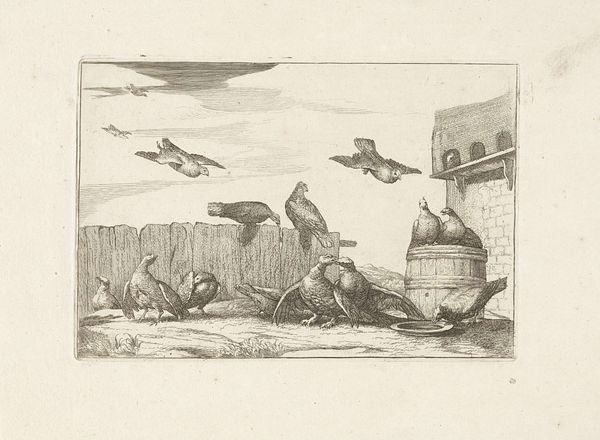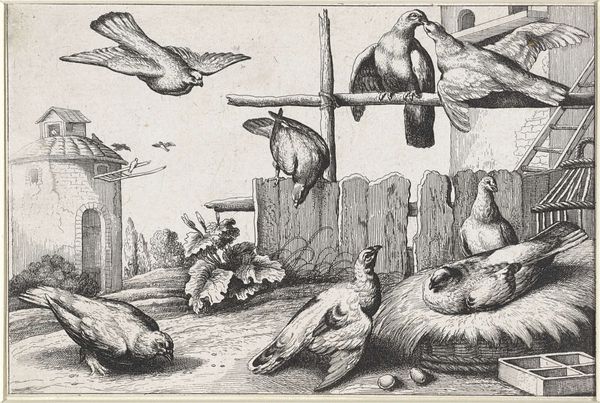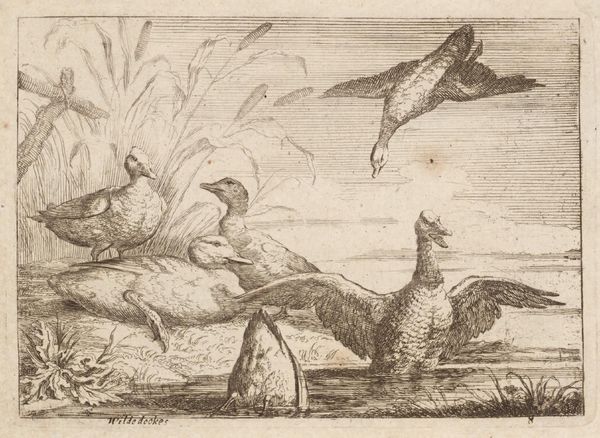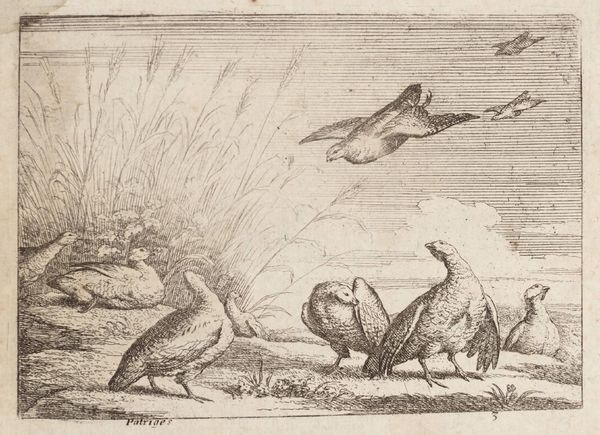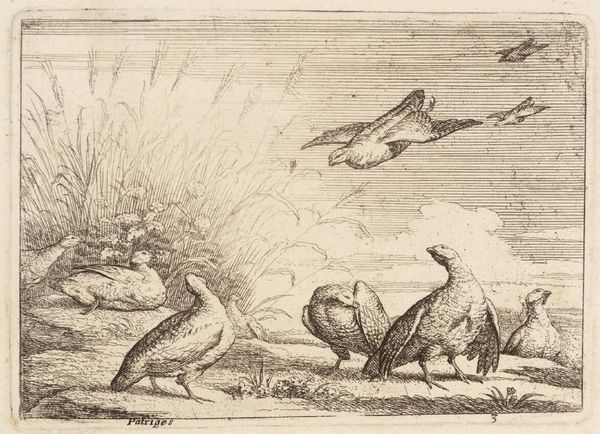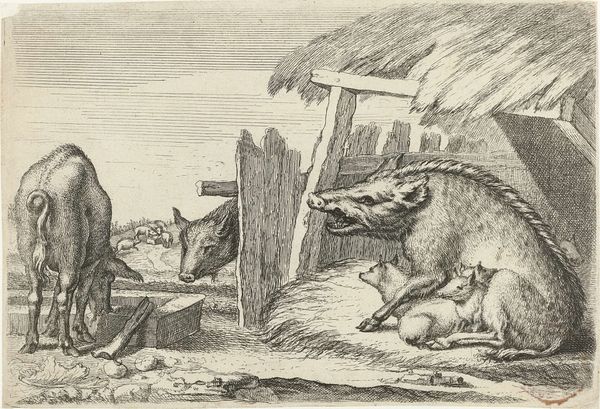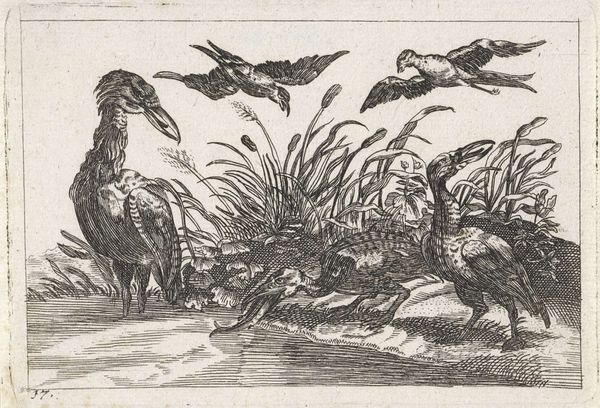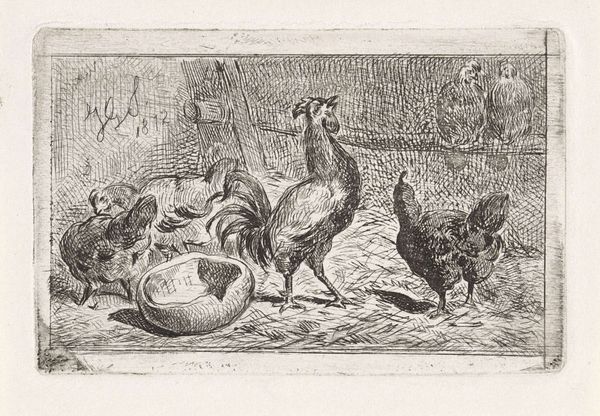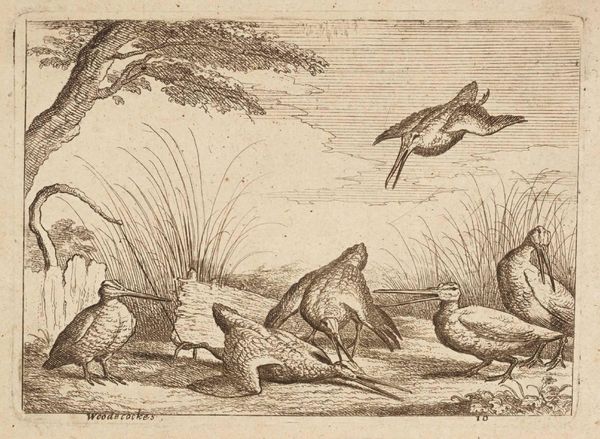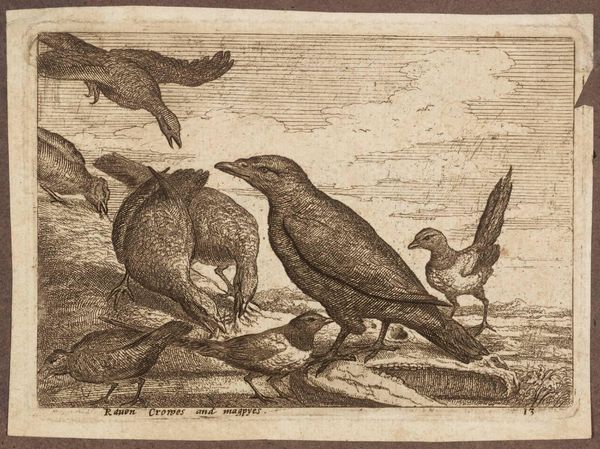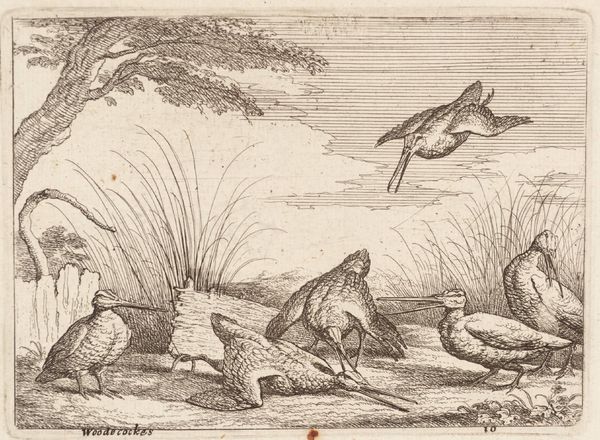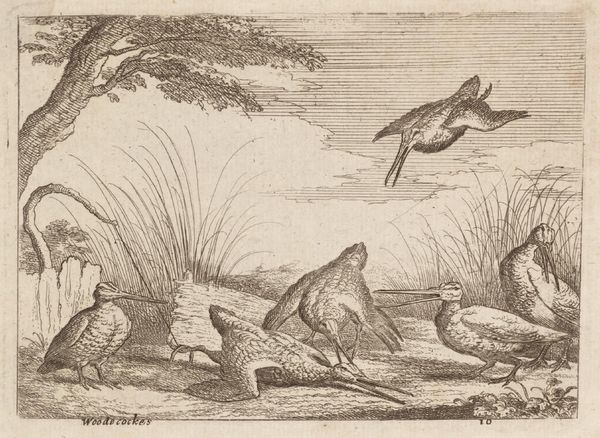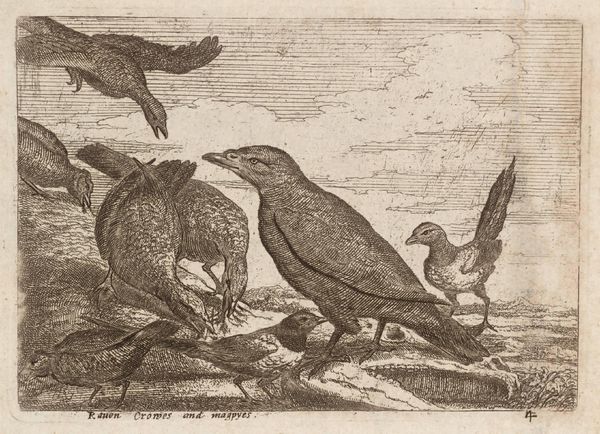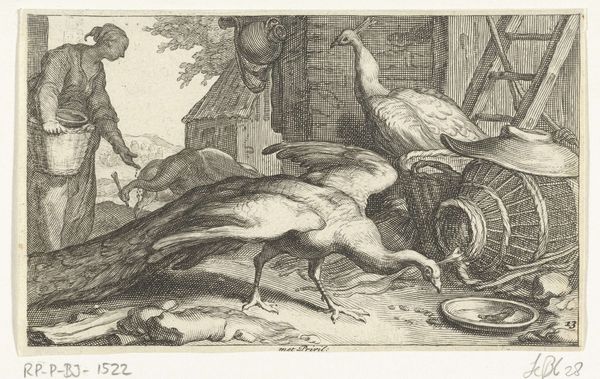
Dimensions: image: 92 x 128 mm
Copyright: CC-BY-NC-ND 4.0 DEED, Photo: Tate
Curator: What strikes me first is the energy of this little print. The birds are so active! Editor: Indeed! Francis Barlow's "Pigeons," held here at the Tate, presents a fascinating glimpse into 17th-century domestic animal portraiture. This etching, measuring just 92 x 128 mm, reveals a small society. Curator: I’m drawn to the allegorical potential. Pigeons have so many symbolic associations – peace, love, even foolishness. What might Barlow be hinting at? Editor: Consider the broader context. Barlow was working in a society deeply concerned with hierarchy and order. This seemingly simple scene of pigeons could be a commentary on social structures, freedom, or even the illusion of domestic tranquility. Is the cage a symbol? Is the flying bird escaping from something? Curator: I see your point. Barlow's decision to focus on pigeons elevates these birds beyond mere pets. They become carriers of meaning. Editor: Precisely. It's a delicate balance between the ordinary and the symbolic, prompting us to consider the deeper narratives embedded within this seemingly quaint image. Curator: The birds are definitely more than just birds, then. Editor: Absolutely. Art invites us to reflect on the world, both seen and unseen.
